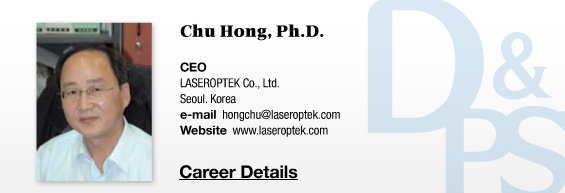The theory of selective photothermolysis led to the birth of safe resurfacing with laser. In the 1980s, CW CO₂ laser was used to treat actinic cheilitis, small acne scars, and rhytides, etc. However, CO₂ laser had a high frequency of burn and required a lot of experience on the part of the doctor. Traditional dermabrasion required about 2 weeks of downtime. But laser required even longer recovery time and frequent side effects including scars.
While CO₂ laser was being widely used in the US for resurfacing, in Germany, Kaufmann et al. were using Er:YAG laser with pulse duration of 250us and wavelength of 2.94um in resurfacing since 1988. The chromophore of both lasers is water and the absorption was 10 times higher with Er;YAG. This allowed Er:YAG laser to remove the epithelium with more precision than CO₂ laser. The CO₂ and Er;YAG lasers primarily differed in the width of dermal thermal injury which manifested as the post-treatment side effect. This was about 5um with Er:YAG laser and 30um with CO₂ laser. The Er:YAG laser, with a relatively smaller area of thermal damage compared to CO₂, was introduced in the US in 1997 by Dr. Goldberg3. Er:YAG laser with short pulse duration and high absorption in water became the standard for skin resurfacing in the US.
However, the CO₂ laser recovered dominance as a new CO₂ laser with shorter pulse duration and less thermal damage was introduced. This, in turn, led to the development of Er:YAG laser with the pulse duration variability from 250us to 10ms. Variable pulse duration Er:YAG laser allows shallow and precise ablation of the skin at a short pulse duration and hemostasis or resurfacing at a long pulse duration, similar to CO₂ laser. Nowadays, users select the resurfacing laser based on safety and efficacy.
HELIOSⅡ/LOTUSⅡ/HYPERION – Manufacturer: LASEROPTEK(www.laseroptek.com)
As mentioned above, Dr. Rox Anderson intended to continue his studies in physics at the graduate school of MIT. However, Dr. Parrish helped him change his plan and obtained MD in dermatology at Harvard in 1984. Currently, he is devoting his efforts to studying the application of light in biomedicine as the Professor of Dermatology at Harvard Medical School and Director of Wellman Center for Photomedicine, Massachusetts General Hospital. He is also actively engaged in sharing scientific communications with the Korean academia (The Catholic University of Korea College of Medicine and Dankook University Medical College). I hope Korea can also produce scientific pioneers such as Dr. Anderson in the near future.
References
1. Anderson RR, Parrish JA. Selective Photothermolysis: precise microsurgery by selective absorption of pulsed radiation. Science. 1983;220:524-7
2. Anderson RR, Parrish JA. The Optics of human skin. J Invest Dermatol. 1981;77:13-9
3. Teikemeier G, Goldberg D. Skin Resurfacing with the erbium:YAG laser. Dermatol. Surg. 1997;23:685-7
4. Adrain RM. Pulsed carbon dioxide and long pulse 10-ms erbium:YAG laser resurfacing: a comparative clinical and histologic study. J Cutan. Laser Ther. 1999;1:197-202.
-To be continued-





















